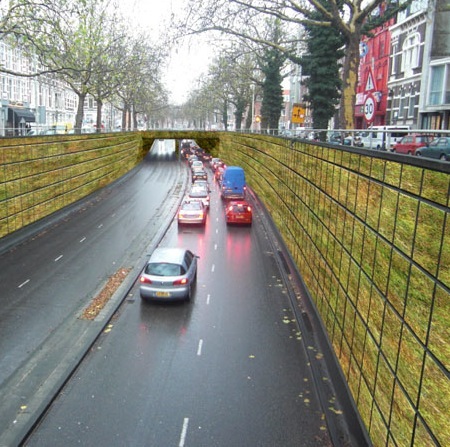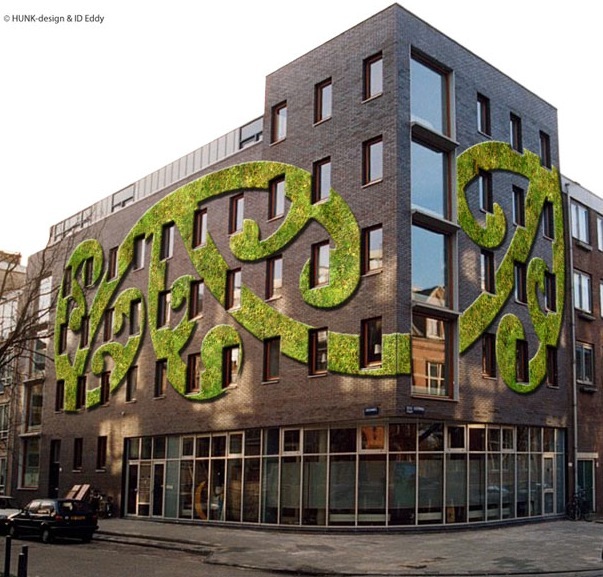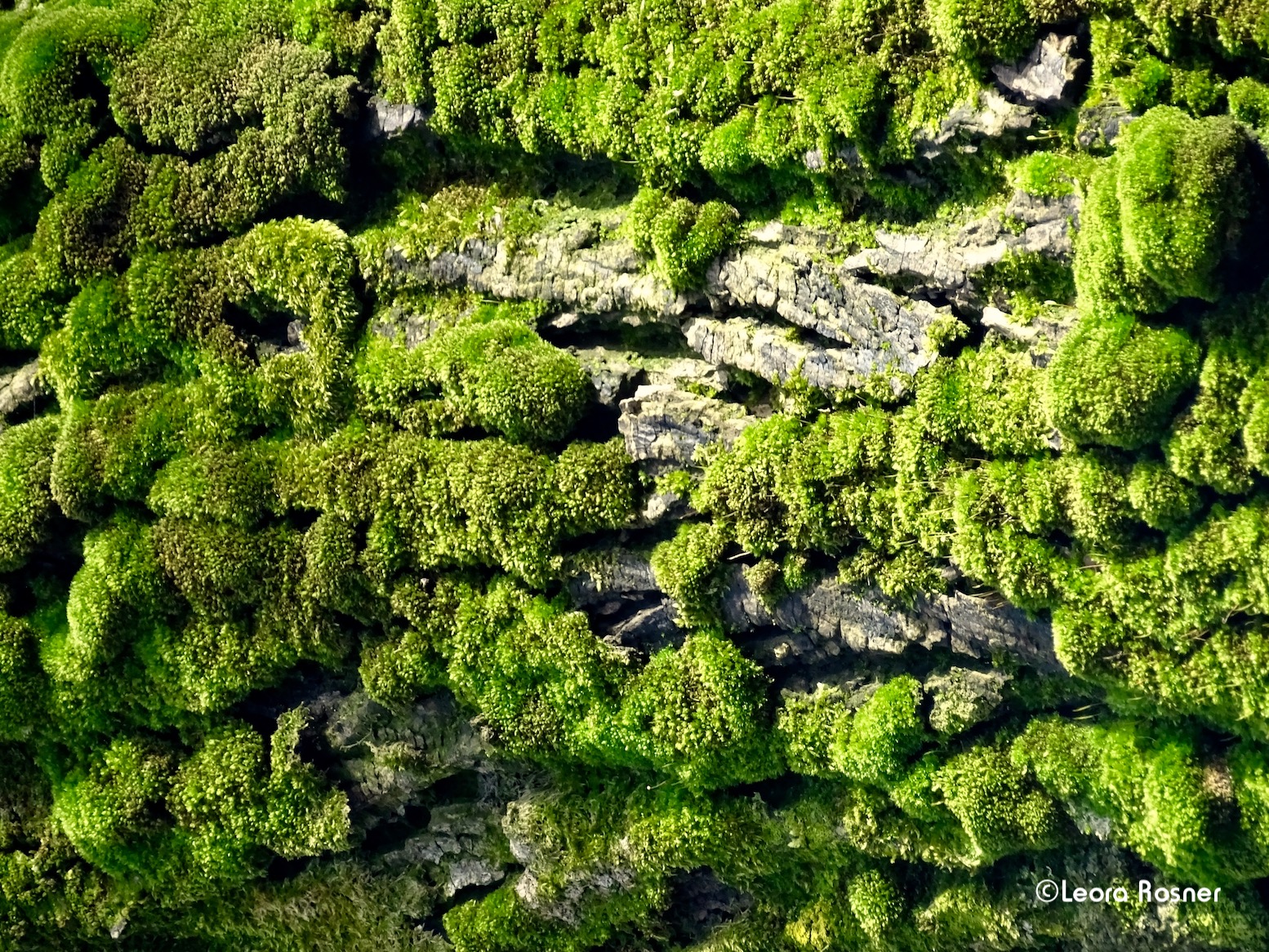In the daily surf ‘n’ seek for innovative ways of greening the (barren) urban landscape I happened upon a small company, Groene Gevel Design (Green Gable Design), in Rotterdam. The question, “what could possibly be new in the urban greening world” may have crossed your mind at this point. Moss is the answer and Groene Gevel Design is in the process of using moss for gables/facades, rooftops, sound barriers along highways and more.
What are mosses and what makes them different from other plants? Mosses are bryophytes which are non-vascular plants. They are similar to liverworts by their multi-cellular rhizoids. Rhizoids act in a similar fashion to roots in the way they support and absorb. There are other differences but they are not universal for all mosses. However the presence of clearly differentiated „stem“ and „leaves“, the lack of deeply lobed or segmented leaves, and the absence of leaves arranged in three ranks would be the qualification of the plant being a moss.
Mosses also act as:
1. buffer against rainwater
2. increase humidity
3. produce oxygen
4. absorb CO2
5. absorb polluted rainwater through nitrogen compounds
6. absorb gaseous air pollution
7. provide an ideal environment for bacteria’s that break down organic
matter
8. “eat” fine particulate matter
The following calculation explains the amount of fine particulate matter absorbed by moss:
A = busy thoroughfare = 14 gr/m2 yearly emissions of fine particulate matter
B = moss = 20 gr/m2 yearly absorption of fine particulate matter
A / B = 0.7 m2 moss is necessary for neutralization of fine particulate matter from 1m2 busy thoroughfare.

This calculation is based on ideal circumstances for moss in research done with moss mats along the side of a busy thoroughfare conducted by Professor of Botony Jan-Peter Frahm of the University of Duisberg.
In fact, one can conclude that moss loves to eat fine particulate matter for breakfast, lunch and dinner. Therefore it would be advantageous if moss beds were placed along sound barriers along roads and highways.
Moss can also be used on rooftops and gables/facades. On rooftops they can be combined with sedum (succulents) and virtually all other plants. Indeed moss also has the following advantages:
- Little to no roofing soil medium required, therefore lighter in weight
- Retains 10 times its’ weight in water
- Thrives in shade produced by shadows from other buildings
- Once the moss is established it becomes drought tolerant
- Rapid growth: 3-6 months for complete coverage
The manner in which Groene Gevel Design uses moss is very interesting indeed! They use stainless steel “ribbons” bent and formed into various shapes. Within that form the moss bed is placed and then hung on a meshwork attached to the gable/façade.

This type of greening would be a perfect incentive for the corporate world and anyone who has a business, factory or shop to green their building while labeling or branding at the same time. The framework for the moss could easily be shaped into letters, numbers, icons and logos allowing for what I call “botanical gable branding”. For older buildings that are listed as monuments moss would be the ideal greening material because of it’s light weight which requires very little to no change in structural weight bearing capacity of the roof. The same can be applied to the roof, let’s call it “botanical roof branding.”
If this were to be picked up in our cities and industrial parks a trend would be set and those at the start would be pioneers leading the rest into a greener, cleaner, healthier present and future.
Have a look here : http://www.groenegeveldesign.nl/

top & bottom photos: © Leora Rosner

